![Expansion MRR: How to Calculate and Increase This Important SaaS Metric [+Examples]](https://blog-static.userpilot.com/blog/wp-content/uploads/2021/10/Expansion-MRR-How-to-calculate-and-increase-this-important-saas-metric_dce198bf7b9463aa98929523b3e34beb_2000.png)
What is expansion MRR and how can you increase this important SaaS metric?
Expansion monthly recurring revenue is the additional revenue you generate from existing customers through upsells, cross-sells, or add-ons.
This article is going to teach you:
- How to calculate your expansion MRR.
- Why expansion revenue is important.
- How expansion MRR drives negative churn (which is actually a good thing!).
How do you currently identify opportunities to increase expansion MRR from existing customers?
Try Userpilot Now
See Why 1,000+ Teams Choose Userpilot

What is expansion MRR?
Expansion MRR is the monthly recurring revenue that you generate from existing customers, that increases the LTV and ultimately leads to negative churn.
That is when your expansion MRR rate is higher than your churn rate, meaning you generate more additional revenue than you lose due to churn in a given period.
Types of expansion revenue
There are three main types of expansion revenue:
- Upsells – these account for trial customers that subscribe to a paid plan or users who upgrade their plan to a more expensive tier.
- Cross-sells – this is generated when customers purchase additional products that add value on top of your main offering.
- Add-ons – they differ from cross-sells in that their use is exclusive to your primary product. They can’t function as an independent product thus marketing them to existing users is the only revenue path.
Why focus on generating more expansion revenue?
In a world where SaaS metrics like MAUs have become the center of media attention, it can be easy to forget that satisfying your existing customers is more important than constantly finding new ones.
By focusing on expansion revenue, you’ll increase the amount of money your SaaS company earns while simultaneously ensuring that customers are happy with your product.
Here are two major benefits of account expansion:
#1 – Expansion MRR leads to negative churn
While the phrase churn may make product marketers shudder, negative churn is actually a good thing as it means you make more money through expansion MRR than the amount of money you’re losing due to a high churn rate.
You can achieve a negative churn rate when the new revenue generated from existing customers is higher than your net MRR churn (revenue lost due to churn).
Focusing on customer retention and generating more annual recurring revenue will also shift your mindset towards generating more value for your existing customers instead of focusing only on stopping customers from churning.
Sometimes, your product’s core value will not match the customer pain points, meaning it’s better to let them go and
Increasing expansion MRR will counteract the effects of net MRR churn and lead to achieving net negative churn.
#2 – Expansion MRR increases LTV of existing customers
Increasing the customer lifetime value is the cheapest way to create additional monthly recurring revenue. This is because customer acquisition costs don’t play a role when you’re upselling existing users or promoting additional services to your current customers.
The additional revenue and reduced customer acquisition expenses can also boost your LTV:CAC ratio.
This is why increasing your expansion MRR rate is essential for the health of your subscription business.
A higher monthly recurring revenue (MRR) can be achieved through either acquiring new customers or a higher expansion MRR rate and focusing on the latter will also have an impact on your average customer LTV.
This, in turn, leads to higher retention rates since your customers are getting more value from your product and will lower your net MRR churn.
How to calculate expansion MRR?
Calculate expansion revenue rate using this formula:
Expansion MRR rate= (Expansion MRR at the end of the month)- (Expansion MRR at the beginning of the month) divided by the Expansion MRR at the beginning of the month and multiplied by 100 to get the rate.
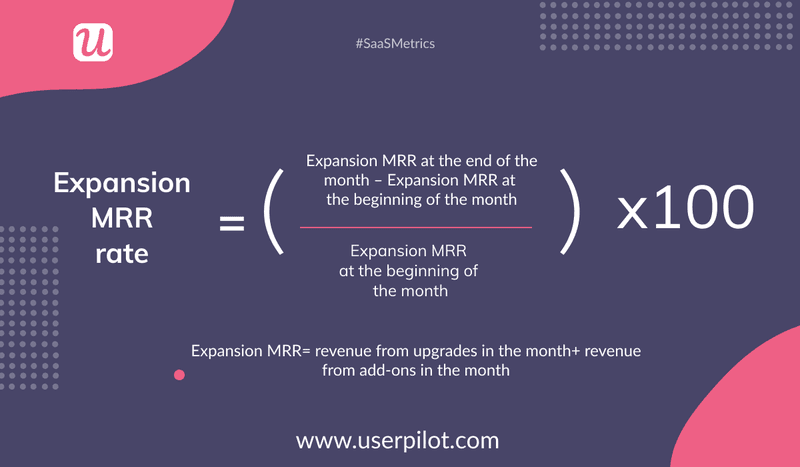
When calculating the expansion MRR rate it’s important that you only account for revenue that you generate through upgrades, cross-sells, and add-ons.
Using this formula, let’s create an example:
If your expansion MRR additional revenue is $2,000 at the beginning of the month and $3,000 at the end of the month then your expansion MRR rate would be 50%.
Increase expansion monthly recurring revenue with contextual in-app messaging
Contextual in-app messaging is the best way to leverage customer satisfaction and use it to create tangible results like recurring revenue.
The tactics below will help you generate expansion revenue from existing customers and create more satisfied, loyal customers in the process.
Prompt freemium users to upgrade with a modal
Using modals can be a highly effective automated upgrade process that gets freemium users to upgrade to paid plans.
It’s all about showing them the added value an upgrade will provide when they need it.
Calendly is a great example of this as their upsell modal appears when users want to perform a task that’s limited by their free account — in this case, adding more than one event type.
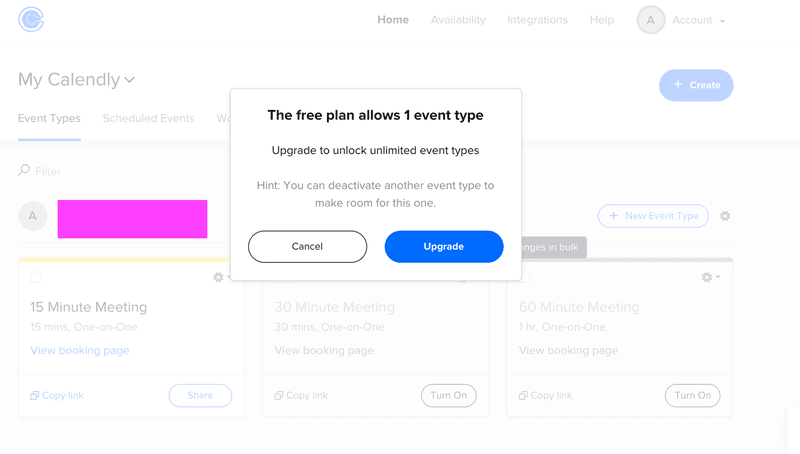
It’s essential that you use modals in moderation since they’re the most intrusive form of in-app messaging and that only gets amplified when the microcopy is asking users to spend more.
Reserving these upsell modals for your loyal customer base who’s well into their user journey can reduce the risk of churned customers.
The patience to wait for that AHA moment before upselling is sure to pay off in the form of revenue growth.
Upsell at the right time using banners
Banners can be another effective tool when trying to generate expansion revenue and compared to modals, they are the always-on sort of messages.
For example, when you scroll up to search for old messages on Slack, the banner tells you that you’ve reached the end of the 10,000 most recent messages.
It puts the upgrade button in front of the user at the exact moment they’re most likely to click it.

A big part of revenue growth is understanding the limitations your existing customers face and offering a (pricier) solution at the ideal moment.
When your business model has different price points based on resource usage, banners that notify the user about the limits can be a powerful way to make upgrades attractive.
Remind users what they are missing out on with a slideout modal
Product usage analytics can tell you which features your existing customers use the most. And reminding them when they’re about to run out due to feature usage account limitations is a great way to get them to upgrade.
Or at least start a free trial of a premium plan and experience the value of it.
That’s what SmallPDF does. To convert more freemium users into paying customers they are constantly reminding the user of their account limitations and what they are missing out on.
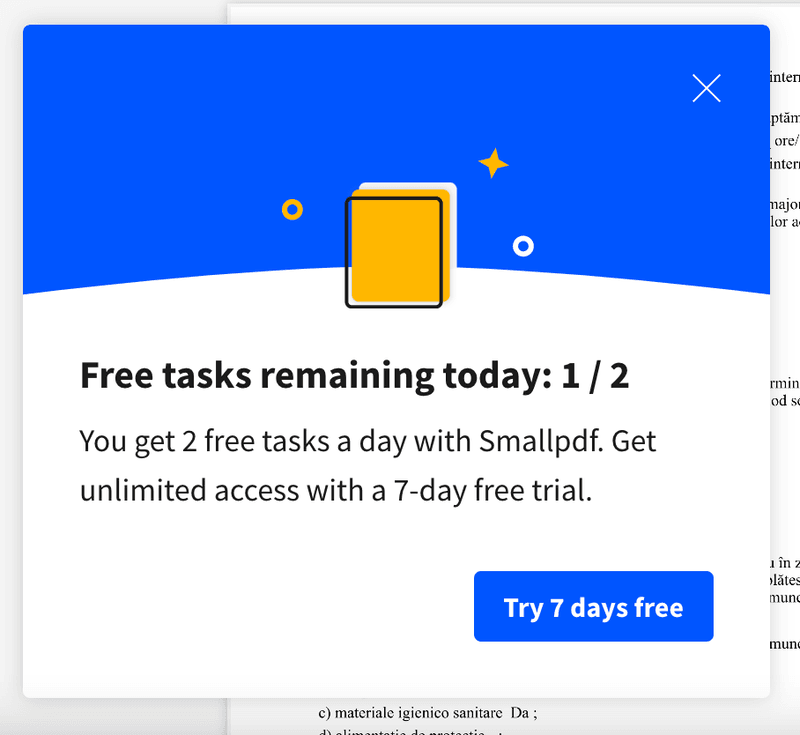
Launch premium features in-app and offer free trials
As mentioned above, teasing premium features through a free trial is another method of driving revenue growth.
Once users experience the value that a premium feature provides first-hand, they’ll be more likely to upgrade at the end of the trial or upon seeing future in-app upsell prompts.
Customer segmentation can ensure that your premium trials target users who have the highest probability of upgrading, raising your conversion rate.
Asana is known for applying this tactic of offering free trials to its premium features by showcasing the primary benefit of the feature with an in-app modal.
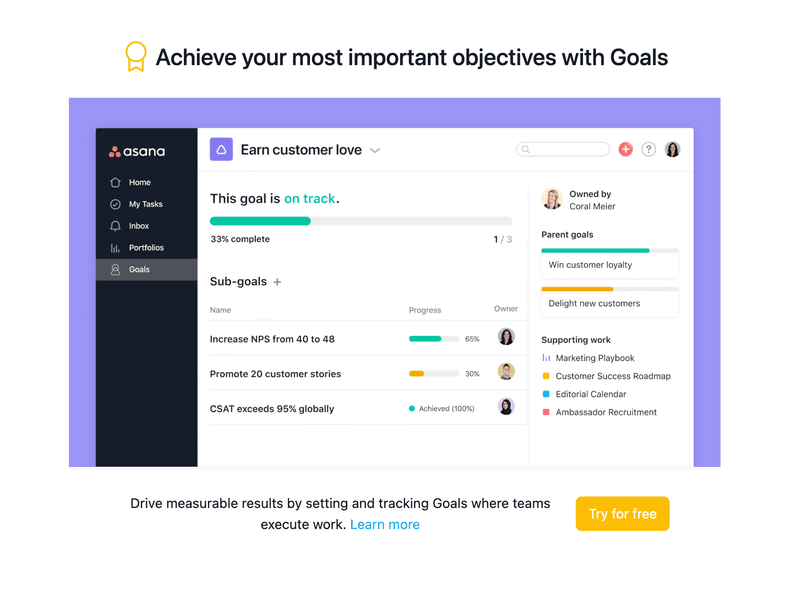
Focus on customer pain points and their JTBD
If you want to get more recurring revenue out of your existing customers then you need to have a deep understanding of their pain points.
Applying any tactic mentioned above won’t work unless you understand your customer’s pain and the job they are trying to achieve so you can contextually showcase the solution- aka an upgrade.
After all, how can you pursue customer satisfaction if you don’t first grasp what they’re struggling with?
Here are a few ways to figure out what those pain points are:
- Gather customer feedback through microsurveys
- Look for churn patterns and figure out which features may be responsible
- Ask churned users why they canceled their subscription and what improvements they want to see in your product
Remember, when your customers hurt so too does your revenue.
How to build contextual in-app messages and increase expansion MRR
There are two paths you can take if you want to incorporate in-app messages into your growth strategy.
The first would be to ask your developer to create custom code modals or banners. The downside is that you won’t get to test variants or make quick changes as needed.
In contrast, using a no-code tool like Userpilot to build in-app messages means you’ll be able to fine-tune them whenever you want and run multiple A/B tests to find out which has the highest impact on your SaaS metrics.
Userpilot: for contextual in-app communication
Userpilot makes it easy to generate expansion revenue by creating upsell opportunities and helping you prompt upgrades without writing a single line of code.
Looking to implement any of the tactics described in this article?
You can do it using advanced segmentation capabilities that make sure your in-product experiences show the right message to the right user at the right time.
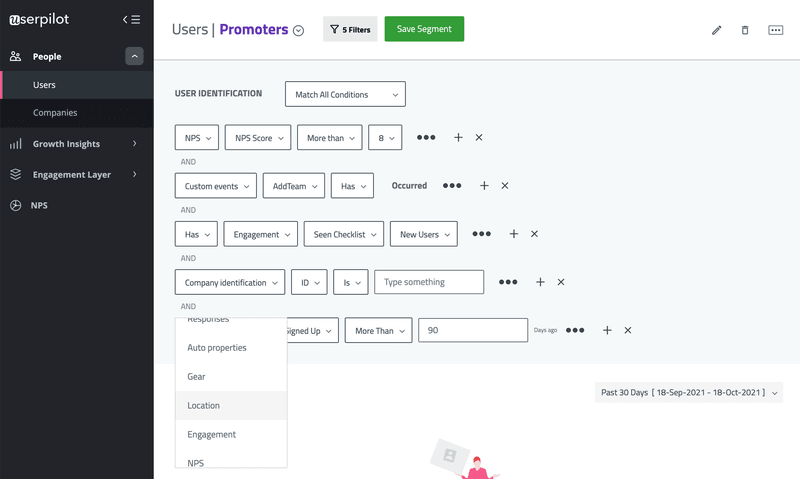
You can choose between modals, slideouts, tooltips, and driven action UI patterns to see which approaches work best for your product.
With Userpilot’s mobile SDK, you can create targeted onboarding flows using slideouts, carousels, and push notifications without writing extra code.
Use product experiments and split-test your in-app messaging to optimize results and improve important SaaS metrics such as expansion MRR rate and others.
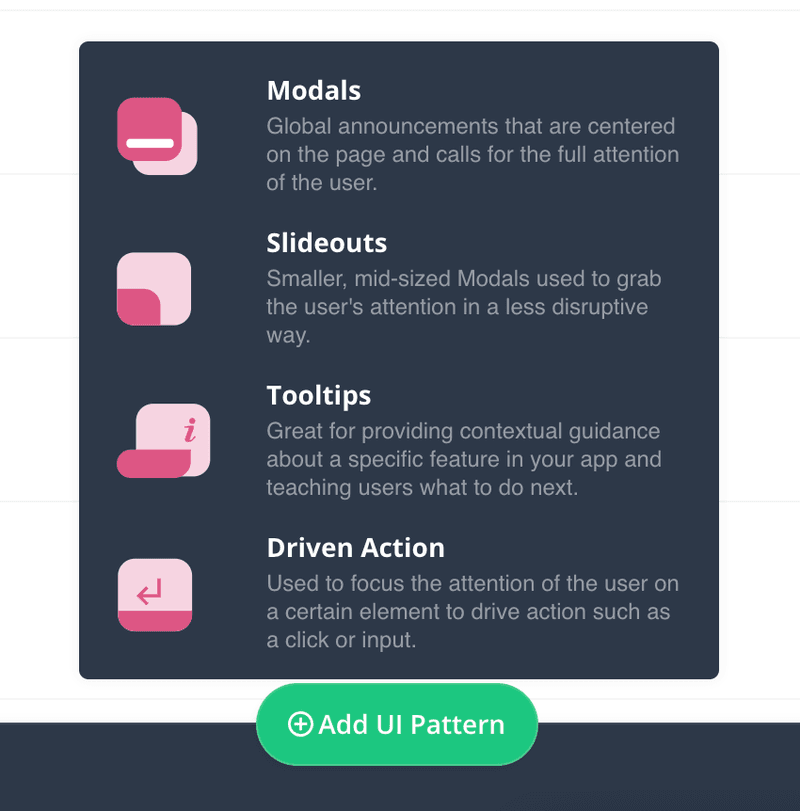
What CMOs have to say about expansion MRR
Here’s why SaaS CMO’s consider expansion MRR an important metric for SaaS companies.
“Expansion MRR is a crucial metric for SaaS companies for a variety of reasons. An increase in revenue from existing customers allows us to grow without the costs of attracting and acquiring new customers. A positive expansion rate also indicates our customers’ happiness with our product and loyalty to our company, which as a result improves our attrition rate. -Mia Naumoska, CMO at Chanty
Mia also mentions it’s important to not only focus on upselling and cross-selling but also look at improving the product, features, and resources of your paid plans based on customer feedback. This will make it easier to achieve greater expansion revenue by having the right paid plans to offer.
“The most effective strategy for increasing the expansion MRR is upselling to existing customers. This is simply because it is proven that upselling to existing customers will undoubtedly be more successful than upselling to potential customers. SaaS companies should also be constantly improving their paid plans with the help of customer feedback and research, combined with making them as accessible as possible.” -Mia Naumoska, CMO at Chanty
Conclusion
As you can see, expansion MRR doesn’t have to be rocket science.
It’s all about using the right tactics at the most opportune moments to appeal to an existing customer. If you apply this strategy to your product then the expansion revenue will begin to flow in no time.
Are you ready to experience the benefits of contextual in-app messaging for yourself? Get a Userpilot Demo today to see how effective contextual in-app messaging is at increasing your expansion MRR rate!






